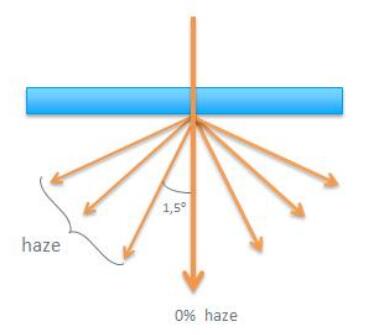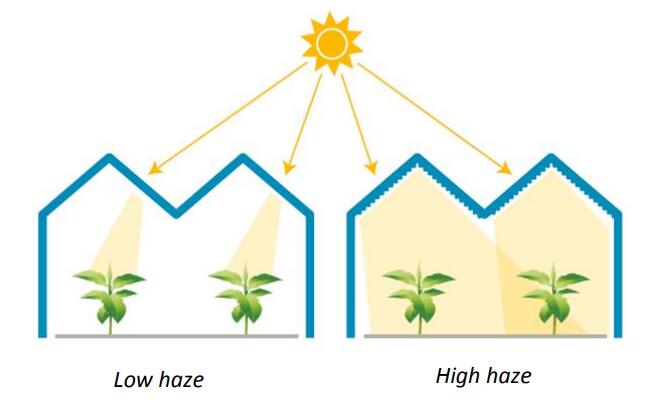
Introduction to Greenhouse Diffuse Glass
Diffuse glass is focused on generating the best possible light transmission and diffusing the light that enters the greenhouse. This results in fewer shadow effects and the conditions throughout the greenhouse are more even. Imitating natural light as much as possible encourages growth of crops.
Diffusion of the light ensures that the light reaches deeper into the crop, illuminating a larger leaf surface area and allowing more photosynthesis to take place. This benefits the growth of the crops. The plant can take in and process more CO2 to assimilate for growth, production and quality.
Diffused light also results in fewer high peaks in leaf temperature, reducing plant stress. By diffusing the direct light, more light can be admitted, accelerating growth. The crop is more generative and the fruits develop quicker. This is because the morphology and development of the crop changes under the influence of diffused light. Under diffuse glass, there is less photo inhibition as there is less direct light in the greenhouse. In photo inhibition, the leaf cannot process the large quantity of light energy and, as a result, the photosynthesis system is damaged.
Haze

Diffusion of light is indicated by a haze factor. The higher the haze, the greater the diffusion. Blank float glass does not diffuse the light and therefore has a haze factor of 0%. Depending on the measurement method used, haze is measured as a percentage quantity of light that is scattered more than 1.5? or 2.5? from the incoming angle of incidence. In general, the higher the haze value, the lower the hemispheric light transmission (hem. LT). This means that in the case of a low haze the (hem.) LT is higher than for a high haze. The correct combination of haze value and (hem) LT depends on the crop, the climate and the growing strategy, for example.

Tags:anti-reflective glass diffuse glass agricultural greenhouses glass greenhouse venlo greenhouse AR glass greenhouses glass agricultural glass horticultural glass #greenhouseglass #Antireflectiveglass #Diffusetemperedglass #Ultrawhitefloatglass #agriculturalgreenhouseglass #diffuseglass #horticulturalglass #Tomatogreenhouse #Coloredpeppergreenhouse #Lettucegreenhouse #Agriculturalgreenhouse #ARglass #venlogreenhouse #greenhouseglass #Antireflectiveglass #Diffusetemperedglass #Ultrawhitefloatglass #agriculturalgreenhouseglass #diffuseglass #horticulturalglass #Tomatogreenhouse #Coloredpeppergreenhouse #Lettucegreenhouse #Agriculturalgreenhouse #ARglass #venlogreenhouse #GlassManufacturer #invernadero #ArchitecturalGlass #ClearFloatGlass #FloatGlass
Previous:What glass is best for a greenhouse?



















